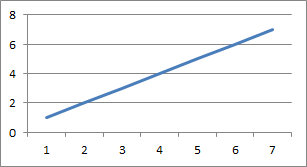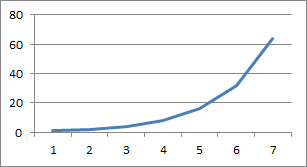A velocity time graph is used to graph the speed of the object. It can show acceleration or constant velocity. Time is on the x-axis and velocity is on the y-axis. There are two basic shapes for the velocity time graph that either represent constant velocity motion or accelerated motion. The principle if that the slope of the line on a velocity time graph reveals useful information about the acceleration of the object. If the acceleration is zero, then the slope of the graph is zero. If the acceleration is positive then the slope is positive and if the acceleration is negative then the acceleration is negative.
An example of a velocity time graph with constant acceleration can be seen below.

An example of a velocity time graph with constant velocity can be seen below.

An example of a velocity time graph where the object is accelerating.

